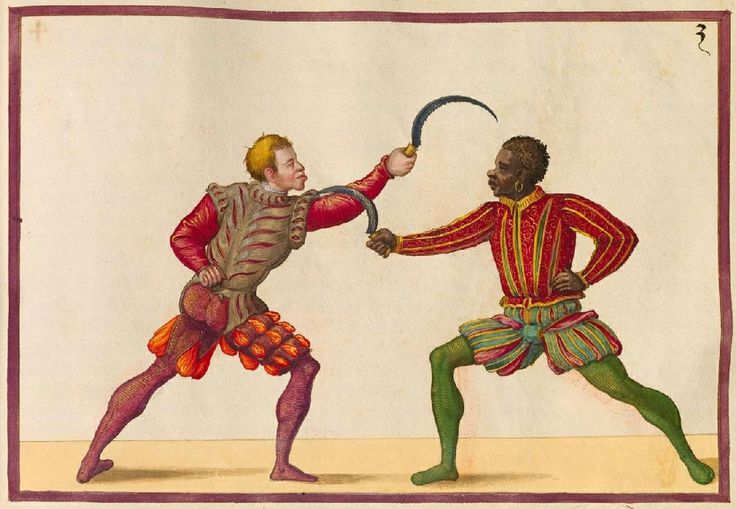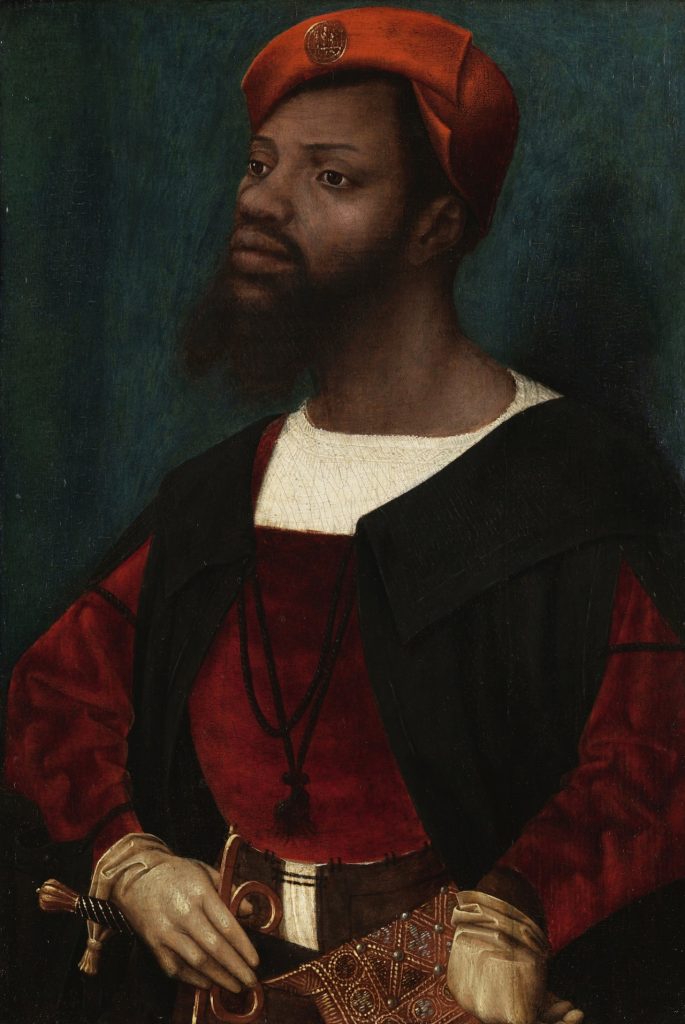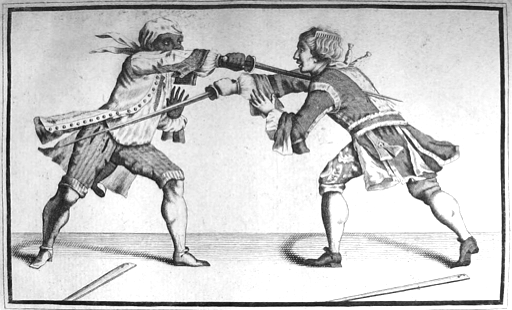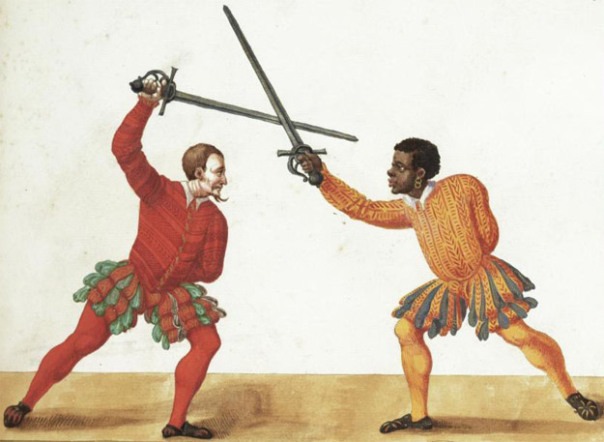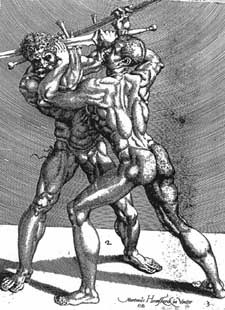Portrait of an African Nobleman (circa 1525 Netherlands) pictured with arming sword
I have often stated that we frequently make the mistake of thinking about European, Asian and African nations and cultures as being mutually exclusive groups. It is true that we live in a modern era where cultural diversity and integration have changed worldwide. Globalization exists now on a scale that is unprecedented within human history. However, contact with and movement between the continents is not something that is exclusive to the last century. When we look back into our history we can clearly see that none of these cultures lived within an impenetrable bubble. We have been trading in more than just goods and services for hundreds of years. From ideas to art, weapons to spices, and people to religions, European, Asian and African cultures have been influencing and integrating with one another for a long time.
Since people with “dark skin” and “Europeans” are not separate and mutually exclusive groups, it is ignorant for us to think of Historical European Martial Arts (HEMA) as something that was strictly practiced by “white people”. Historically, Europe has never been a culturally or racially isolated place, so why should we assume that the martial arts that came from the Renaissance or Middle Ages (the time periods we study) would be racially or culturally exclusive?
A black fencer parries his opponent's blade with his offhand as he lands a thrusts with his smallsword
I have written in the past about predominant black figures from our history. There are many success stories: from brigadier general to fencing master, from poet to member of the royal court. That being said, even though black people played significant roles within European and New World history, these individuals still had to fight against systemic racism in order to be given the opportunity to achieve status and renown within these societies. I have often said that the “sword is the great equalizer” and this was very true for black Europeans during the Renaissance and Middle Ages, who found some of the best opportunities to prove their equality when it came to matters of the sword and what we call Western Martial Arts.
Paulus Hector Mair’s "De Arte Athletica"(circa 1542 Germany) showing a black sidesword fencer
Modern HEMA practitioners have only a handful of fighting manuals and treatises that survived the test of time. We are fortunate to have these remaining texts available for translation and study. This is because while Europeans have been fighting with swords (and other weapons) for centuries, manuals teaching these arts were very uncommon -- especially before the invention of the printing press. Despite this, we still have manuscripts containing illustrations which clearly depict fencers of colour. Thanks to websites like Medieval POC we can look at collections of art and literature which show that black Europeans were more common then we have often believed.
A black fencer grappling his opponent using a longsword
February may be Black History Month, but I personally believe that no one's history should be regulated to a single month alone. Black History is European history. Black History is world history. Black history is our history. When we look far enough back into the history of this world of ours we can see that European, Asian and African cultures have been influencing and integrating with one another for centuries. It is through our shared past that we were able to come to where we are now -- the present -- and I foresee a future filled with possibilities, as we continue to share and work with each other.
